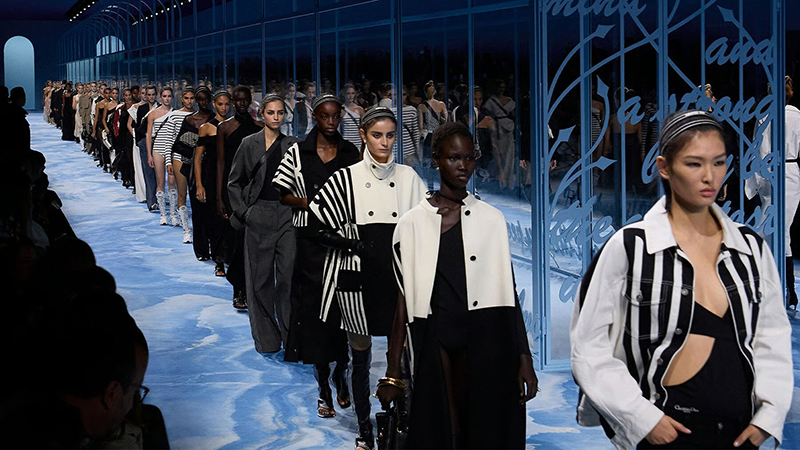Uncategorized
The response of Fashion Week to the challenge: creativity, compelling storytelling, and media coverage
The Spring Summer 2026 Fashion Week is set to return, bringing with it remarkable changes for aesthetes and fashion enthusiasts. As art, commerce, and media intertwine, the line between pure creativity and strategic marketing continues to blur, redefining how fashion is conceived, presented, and experienced.
The “See Now, Buy Now” (SNBN) model has become increasingly popular since 2016, with brands like Burberry and Tommy Hilfiger leading the way. Customers can purchase items immediately after the show, instead of waiting 4–6 months as before. According to McKinsey & BoF, brands successful with the SNBN model can see a 30–50% boost in sales from their fashion shows. However, to achieve commercial success, designers often must prioritize easily sellable, shareable pieces on social media over pure innovation. A survey by Fashion Monitor also revealed that nearly half of designers feel this model limits their artistic experimentation.
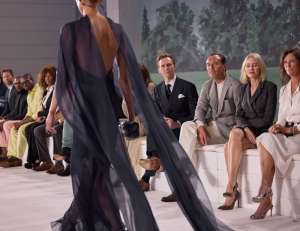
The shortened production cycles are putting significant pressure on supply chains, making it difficult for many brands to maintain quality. Meanwhile, luxury giants like CHANEL and Dior continue to stick to traditional cycles, viewing this as a way to preserve the steady, effective operation of their well-oiled machinery. However, while larger brands pursue stability, independent designers are choosing to keep the spirit of experimentation alive. From small, off-schedule runway shows to impromptu presentations in public spaces, talents like Tomo Koizumi, Harris Reed, and Dilara Findikoglu demonstrate that true creativity doesn’t have to be tied to big budgets or glamorous catwalks.
In recent years, many luxury brands have been focusing on consolidating their brand identity and key designs, reducing risks associated with innovation. This strategy aims to preserve core values and timeless elegance. According to Euromonitor, about 70% of luxury brands continue to feature their main designs for at least 3–5 years to maintain brand recognition. Runway presentations are also trending towards simplicity, emphasizing product showcase over spectacular staging, reflecting both business pressures and the need to retain loyal customers.
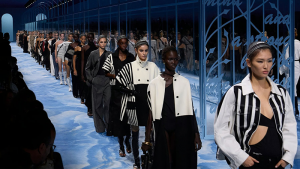
The explosion of fashion weeks in Asian markets like Tokyo, Seoul, and Shanghai increased by 40% between 2020 and 2024. However, the 2024 Fashion Week Association report notes that about 50% of satellite events are perceived as lacking innovation, often prioritizing local branding over setting global trends. Nonetheless, emerging signs of change are evident. Niche fashion weeks remain spaces where young designers experiment with cross-disciplinary collaborations—from visual artists to virtual reality technology—creating multi-layered, performative collections. The ability to print designs with 3D on the runway or incorporate AR experiences for online audiences demonstrates that innovation is flourishing in unconventional formats.
Today, each runway show during fashion weeks generates tens of millions of social media interactions. Designs must be “Instagram-friendly”—highly engaging on Instagram, visually striking, and easily viral. About 65% of designers admit to adjusting their creations to better suit online trends and preferences. Since social media has become an effective marketing channel, brands now focus on cultivating ambassador programs with influencers from around the world who can generate massive reach and buzz, leveraging this digital platform to maximize their visibility and impact.
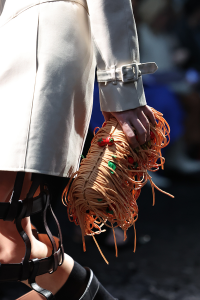
According to BoF, 55% of online consumers are more interested in visual imagery than in the story behind the product. When “appearance overtakes content,” many shows become more about algorithmic engagement than artistic experimentation. However, social media also empowers audiences—especially Gen Z—with very different expectations. They don’t seek unattainable luxury; instead, they value individuality, authenticity, and social values. This shift drives designers to innovate not only in shapes and silhouettes but also in storytelling and the way brands engage with consumers on issues of ethics, culture, and social responsibility.
While there are concerns about a decline in creativity, it is undeniable that fashion weeks are undergoing a process of redefinition. From being spectacle-driven events of visual shock, they are gradually evolving into multi-layered gatherings where design, media, storytelling, and social influence intersect. The increasing presence of celebrities and influencers has transformed fashion weeks into a “global red carpet.” According to BoF, over 60% of audiences are now more interested in side events than the collections themselves, reflecting a shift toward experiential and entertainment-focused engagement beyond traditional runway shows.
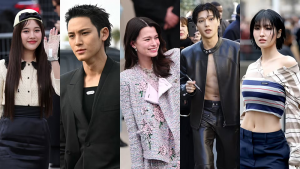
However, this very evolution is what makes fashion weeks events watched by audiences worldwide. Today, creativity extends beyond just design—it encompasses storytelling, brand image-building, and community engagement. Despite the market’s challenges, fashion weeks have not lost their creative spirit; instead, they are transforming. The greatest challenge now is recognizing and respecting new forms of creativity, even if they no longer aim to shock or provoke controversy as they did in the past.


